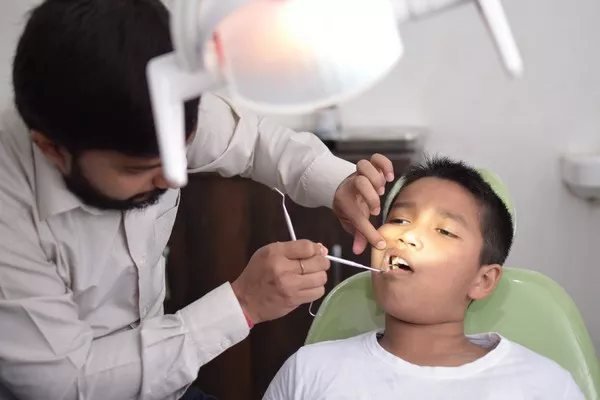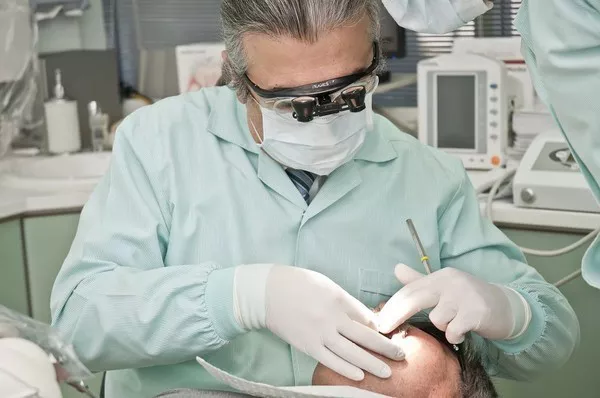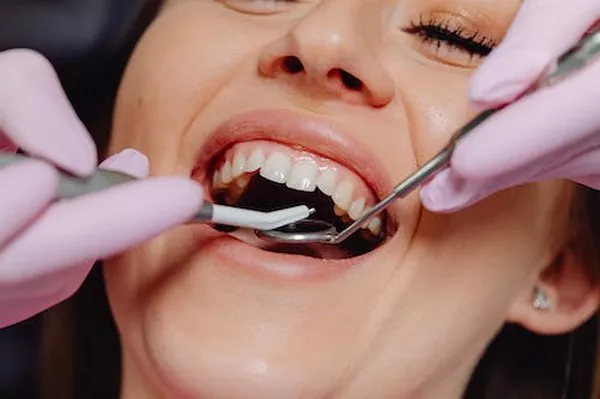Tooth decay is a common dental issue that affects millions of people worldwide. As the desire for a brighter smile increases, many individuals wonder if they can whiten teeth that are already compromised by decay. This article explores the relationship between tooth decay and whitening treatments, emphasizing the importance of addressing dental health before cosmetic procedures.
Understanding Tooth Decay
Tooth decay, also known as dental caries or cavities, is a process where the enamel (the outer layer of the tooth) is eroded by acids produced by bacteria in the mouth. This occurs when bacteria metabolize sugars and starches left on the teeth from food and drinks, producing acid as a byproduct. This acid attacks the enamel, leading to the formation of cavities.
Tooth decay progresses through several stages. Initially, it begins with demineralization, where minerals are lost from the enamel. If left untreated, it can progress to the dentin (the layer beneath the enamel) and eventually reach the pulp, where the nerves and blood vessels are located, causing pain and potentially leading to more severe dental issues such as infections and abscesses.
The effects of tooth decay are multifaceted. Early decay may not cause noticeable symptoms, but as it advances, it can lead to tooth sensitivity, pain, visible holes or pits in the teeth, and even tooth loss. Decay weakens the structure of the tooth, making it more susceptible to fractures and further damage.
Whitening and Decay Interaction
Whitening treatments involve the use of bleaching agents, typically hydrogen peroxide or carbamide peroxide, to remove stains and lighten the color of teeth. These agents work by penetrating the enamel and breaking down the molecules that cause discoloration. While effective for cosmetic enhancement, whitening treatments are not suitable for teeth with decay.
Applying whitening agents to decayed teeth can exacerbate the existing damage. The chemicals can penetrate the compromised enamel and reach the dentin or even the pulp, causing increased sensitivity and pain. In severe cases, this can lead to inflammation of the pulp (pulpitis) or even irreversible damage requiring root canal treatment.
Moreover, whitening treatments can dry out the enamel temporarily, making it more porous and vulnerable to further acid attacks from bacteria. This not only worsens the existing decay but also increases the risk of new cavities forming.
Pre-Treatment Requirements
Before considering any whitening treatment, it is crucial to address and treat any existing dental issues, particularly cavities. Here are the key reasons why this is essential:
Preventing Further Damage: Treating cavities helps to restore the tooth structure and protect it from further decay. This ensures that the tooth is strong enough to withstand the effects of whitening agents without sustaining additional damage.
Reducing Sensitivity: Decayed teeth are often more sensitive due to exposed dentin. By treating the decay and restoring the tooth, sensitivity can be reduced, making whitening treatments more comfortable.
Ensuring Even Whitening: Untreated cavities can lead to uneven whitening results. The decayed areas may not respond to the bleaching agents in the same way as healthy enamel, leading to patchy or inconsistent whitening.
Improving Overall Oral Health: Addressing cavities and other dental issues as part of a comprehensive oral health strategy ensures that the mouth is in the best possible condition, enhancing the overall effectiveness and longevity of cosmetic treatments like whitening.
Risks of Whitening Decayed Teeth
The risks associated with applying whitening agents to decayed teeth are significant and can lead to various complications:
Increased Sensitivity: Whitening agents can cause temporary tooth sensitivity, which can be exacerbated in the presence of decay. The bleaching chemicals can penetrate through the damaged enamel and irritate the nerves within the tooth, leading to sharp, intense pain.
Worsening Decay: The chemicals in whitening treatments can further erode the already weakened enamel, accelerating the progression of decay. This can lead to larger cavities and potentially necessitate more extensive dental procedures, such as fillings, crowns, or root canals.
Chemical Burns and Irritation: Whitening agents can cause chemical burns to the gums and other soft tissues in the mouth. If the decayed tooth structure is compromised, these chemicals can also irritate the inner tissues of the tooth, leading to inflammation and discomfort.
Pulp Damage: In severe cases, the penetration of whitening agents into the pulp chamber can lead to pulpitis, an inflammation of the dental pulp. This condition can cause severe pain and may require a root canal to treat.
Infection Risk: Exposing the inner structures of a decayed tooth to whitening agents can increase the risk of bacterial infection. If bacteria enter through cracks or cavities, it can lead to an abscess, a painful collection of pus that may require surgical intervention.
Professional Consultation
Before embarking on any whitening treatment, it is imperative to consult with a dentist. A professional evaluation can ensure that your teeth are in the best possible condition for whitening and help prevent any complications. During this consultation, a dentist will:
Conduct a Thorough Examination: The dentist will perform a comprehensive examination, including X-rays if necessary, to assess the overall health of your teeth and gums. This helps identify any underlying issues, such as cavities or gum disease, that need to be addressed before whitening.
Provide Professional Cleaning: A dental cleaning can remove surface stains and plaque, enhancing the effectiveness of whitening treatments. It also ensures that the teeth are free from debris that could interfere with the whitening process.
Recommend Appropriate Treatments: Based on the examination, the dentist can recommend the best course of action. This might include treating any cavities or other dental issues before considering whitening. They can also suggest alternative cosmetic options if whitening is not advisable.
Discuss Risks and Benefits: The dentist can explain the potential risks and benefits of whitening treatments, helping you make an informed decision. They can also provide guidance on the most suitable whitening methods based on your dental health.
Create a Personalized Plan: If whitening is deemed appropriate, the dentist can create a personalized treatment plan that ensures the best results while minimizing risks. This may include using custom-fitted trays for at-home whitening or in-office treatments with professional-grade products.
Alternative Options
For individuals with decayed teeth seeking to improve their smile, there are several cosmetic alternatives to whitening that can provide excellent results:
Dental Veneers: Veneers are thin shells made of porcelain or composite resin that are bonded to the front surfaces of teeth. They can mask discoloration, minor misalignments, and damage, creating a uniform and aesthetically pleasing appearance. Veneers are a good option for teeth that are not structurally compromised by severe decay.
Dental Crowns: Crowns, also known as caps, cover the entire tooth and provide both aesthetic and functional benefits. They are particularly useful for teeth that have been extensively damaged by decay, as they restore strength and appearance. Crowns can be made from various materials, including porcelain, ceramic, and metal, offering both durability and a natural look.
Bonding: Dental bonding involves applying a tooth-colored resin to the surface of the teeth to correct imperfections such as chips, cracks, or discoloration. This is a less invasive and more cost-effective option compared to veneers or crowns and can be used to improve the appearance of decayed teeth after they have been treated.
Inlays and Onlays: These are indirect restorations made from porcelain, composite resin, or gold that fit into or on the tooth. They are used to repair moderate decay or damage when a full crown is not necessary. Inlays and onlays can restore both the function and appearance of the teeth.
Tooth-Colored Fillings: Modern fillings made from composite resins can be used to repair cavities while matching the natural color of the tooth. This option is both functional and aesthetically pleasing, making it a good choice for visible areas.
Preventive Measures
Brush Regularly: Brush your teeth at least twice a day using fluoride toothpaste. Be sure to brush all surfaces of your teeth and your tongue to remove bacteria and food particles.
Floss Daily: Flossing removes plaque and food particles from between the teeth and below the gum line, areas that a toothbrush cannot reach. Daily flossing is crucial for preventing cavities and gum disease.
Use Mouthwash: Antibacterial mouthwash can help reduce the number of bacteria in the mouth, decreasing the risk of decay. Fluoride mouthwash can also help strengthen the enamel.
Limit Sugary Foods and Drinks: Bacteria in the mouth thrive on sugar, producing acids that lead to decay. Limit your intake of sugary snacks, drinks, and foods, and try to brush or rinse your mouth after consuming them.
Drink Plenty of Water: Drinking water helps rinse away food particles and bacteria. Fluoridated water can also help strengthen your teeth.
Eat a Balanced Diet: A diet rich in vitamins and minerals supports dental health. Foods high in calcium, such as dairy products, and those containing phosphorus, such as meat and eggs, are particularly beneficial for strong teeth.
Regular Dental Check-Ups: Visit your dentist for regular check-ups and cleanings, typically every six months. Professional cleanings remove plaque and tartar that cannot be removed by brushing and flossing alone. Regular exams help detect and address potential issues early.
Consider Dental Sealants: Sealants are protective coatings applied to the chewing surfaces of the back teeth. They can help prevent cavities in these hard-to-reach areas.
Avoid Tobacco Products: Smoking and the use of other tobacco products can increase the risk of gum disease and oral cancer, as well as contribute to tooth discoloration and decay.
Use Fluoride Products: Fluoride helps strengthen enamel and prevent decay. Use fluoride toothpaste and consider fluoride treatments if recommended by your dentist.
Conclusion
While the allure of a bright, white smile is strong, it is crucial to prioritize dental health before undergoing any cosmetic treatments. Whitening decayed teeth can lead to severe complications, including increased sensitivity, exacerbated decay, and significant pain. By addressing cavities and other dental issues first, and consulting with a dental professional, you can ensure that your smile is not only beautiful but also healthy and strong. If whitening is not an option, alternative cosmetic treatments like veneers or crowns can provide the desired aesthetic results while preserving and protecting your teeth. Taking preventive measures will help maintain a healthy, decay-free smile, making future cosmetic enhancements both safer and more effective.
FAQs About Whitening and Restoring Decayed Teeth
1. Can decayed teeth be white again?
Decayed teeth can regain a whiter appearance, but the process involves more than just cosmetic whitening. It’s essential to address the underlying decay first. Teeth whitening treatments are not recommended for decayed teeth because the bleaching agents can exacerbate the damage and cause severe sensitivity. Instead, the decay must be treated by a dentist, which often involves filling cavities or using other restorative treatments. Once the teeth are healthy, cosmetic options such as veneers, crowns, or professional whitening can be considered to improve their appearance.
2. How can I make my cavity teeth whiter?
Treat the Cavities: Visit a dentist to fill any cavities and address any underlying decay. This step is crucial to prevent further damage and sensitivity.
Professional Cleaning: Have your teeth professionally cleaned to remove plaque, tartar, and surface stains. This can enhance the natural color of your teeth.
Consider Restorative Options: Depending on the extent of the decay, your dentist might recommend restorative treatments such as:
- Composite Fillings: Tooth-colored fillings that blend with your natural tooth color.
- Veneers: Thin shells placed over the front surface of teeth to mask discoloration and minor imperfections.
- Crowns: Caps that cover the entire tooth, providing both cosmetic and structural benefits.
Professional Whitening: Once your teeth are healthy, professional whitening treatments can be considered. These treatments are more effective and safer when supervised by a dentist.
3. Can a dying tooth be whitened?
A “dying” tooth, often indicated by discoloration due to nerve damage or internal bleeding, cannot be effectively whitened using standard bleaching treatments. Whitening products are designed to work on the enamel and do not address discoloration from within the tooth.
For a dying tooth, the following options are more suitable:
Root Canal Treatment: If the tooth’s pulp is damaged or infected, a root canal can save the tooth by removing the diseased tissue. Afterward, the tooth can be restored with a crown to improve its appearance.
Internal Bleaching: After a root canal, internal bleaching may be an option. This procedure involves placing a bleaching agent inside the tooth to lighten it from the inside out.
Crowns or Veneers: To achieve the desired cosmetic effect, a crown or veneer can be placed over the tooth. This approach not only improves the tooth’s appearance but also provides additional strength and protection.
4. Is it possible to restore tooth decay?
Yes, it is possible to restore tooth decay. The treatment options depend on the severity of the decay:
Fluoride Treatments: In the early stages of decay, fluoride treatments can help remineralize the enamel and reverse small cavities.
Fillings: For more advanced decay, fillings are the most common solution. The decayed portion of the tooth is removed and replaced with a filling material such as composite resin.
Crowns: If the decay is extensive and has weakened the tooth significantly, a crown may be necessary. A crown covers the entire tooth, restoring its shape, strength, and appearance.
Root Canal Treatment: When decay reaches the tooth’s pulp, a root canal treatment is required to remove the infected tissue. After the root canal, the tooth is typically restored with a crown.
Extraction and Replacement: In cases where the tooth is too severely damaged to be saved, extraction might be necessary. The missing tooth can then be replaced with a dental implant, bridge, or denture to restore function and aesthetics.
You Might Be Interested In
- What to do if you have yellow teeth?
- Why do people get yellow teeth?
- What to do after taking whitening strips off?






























